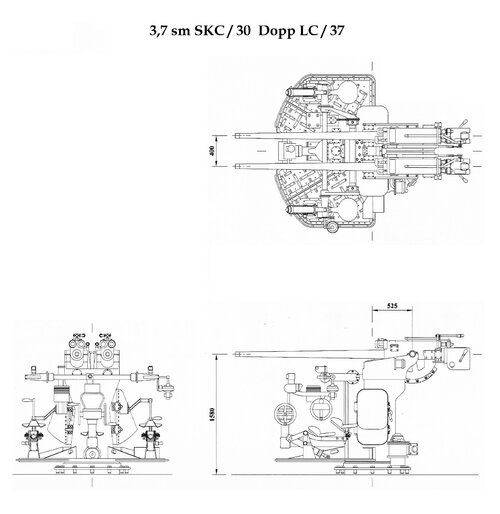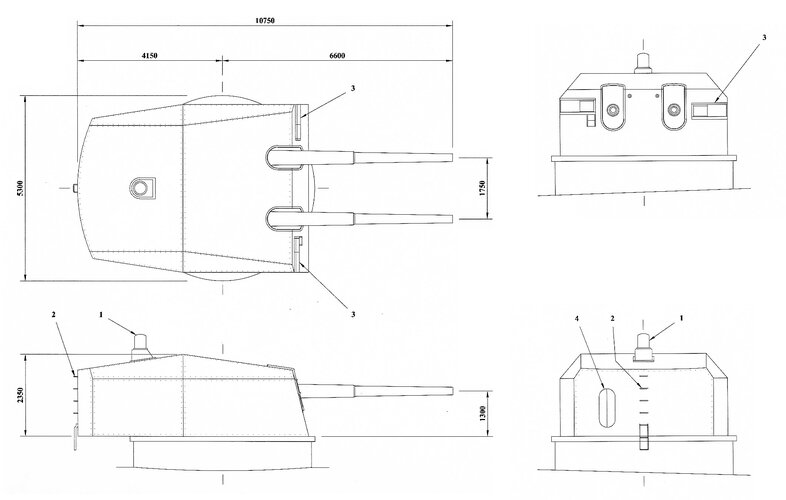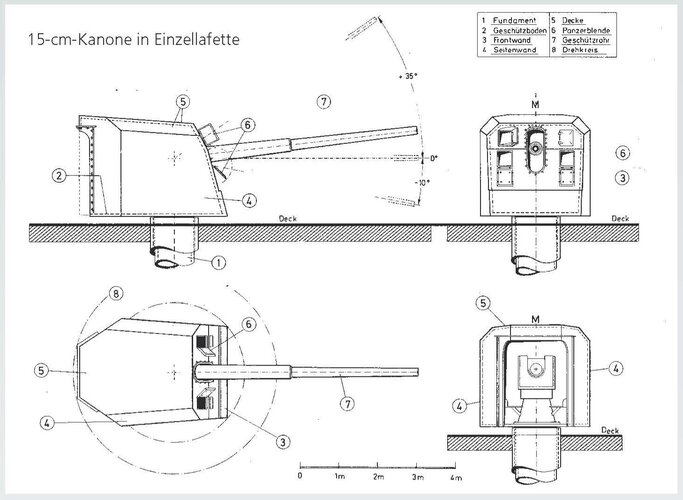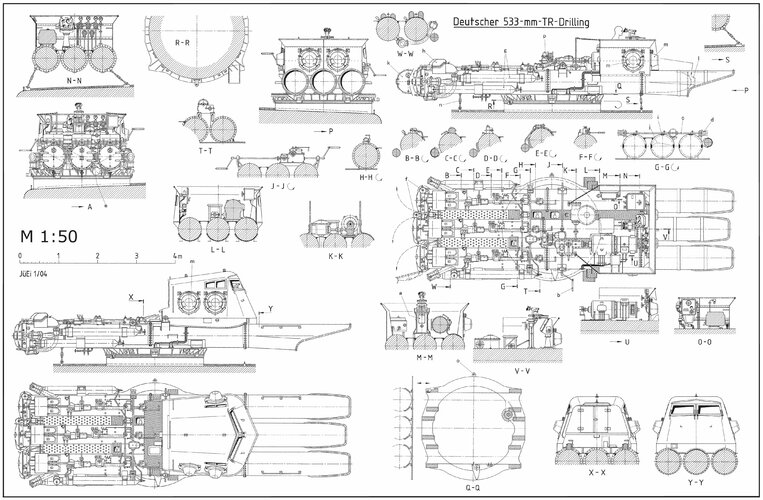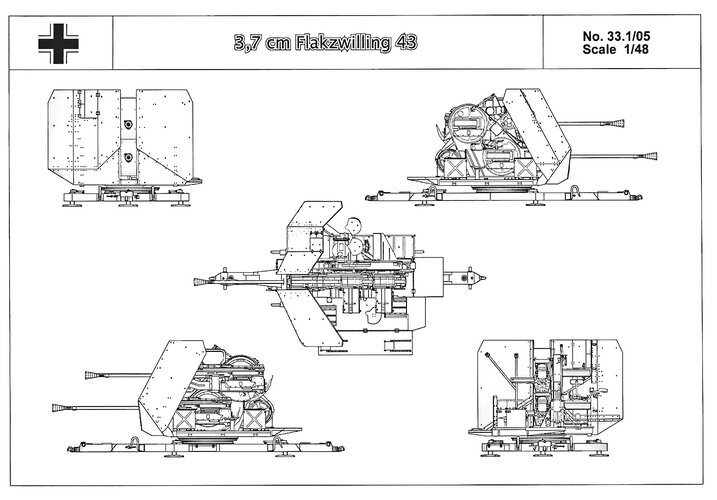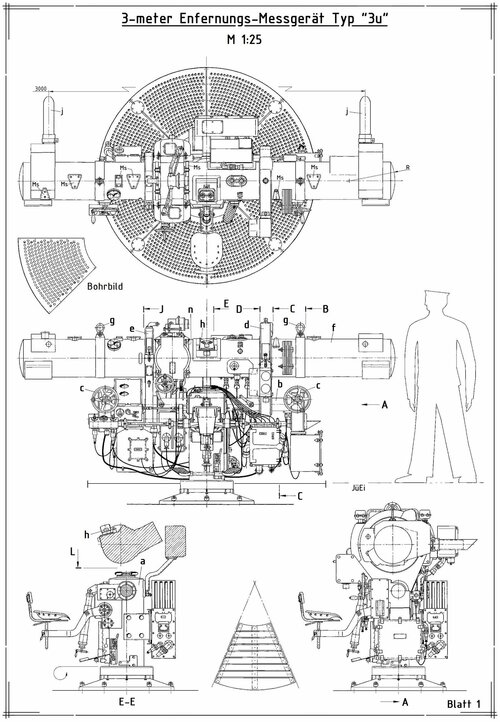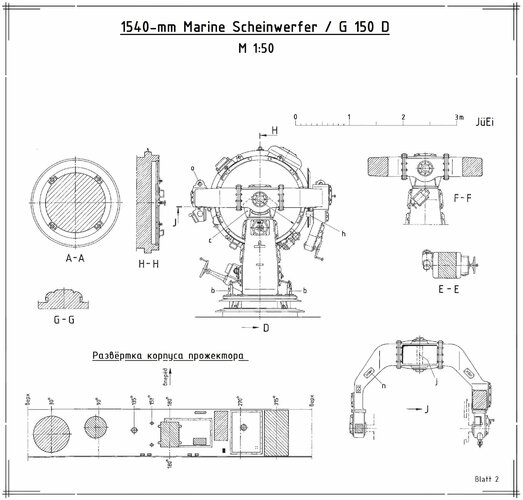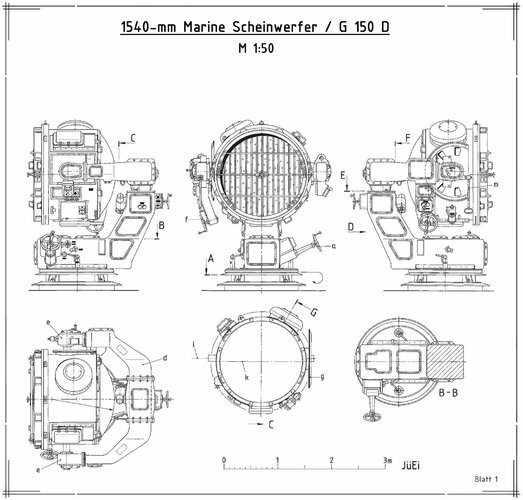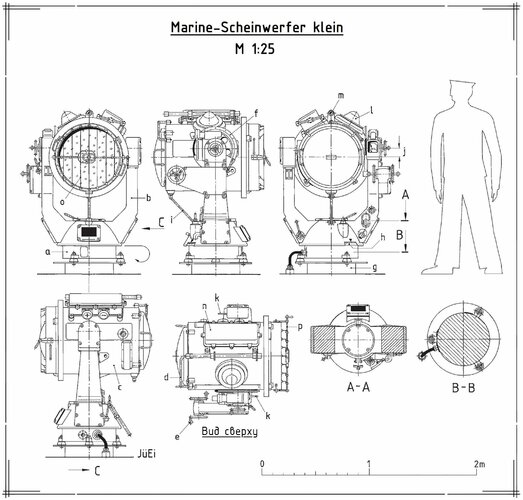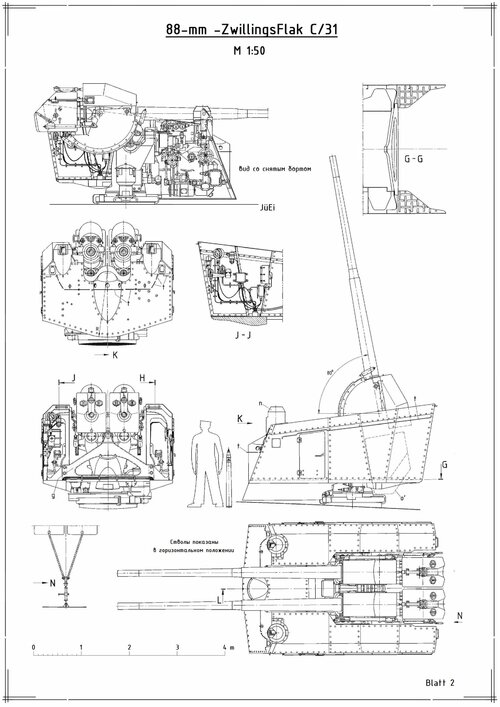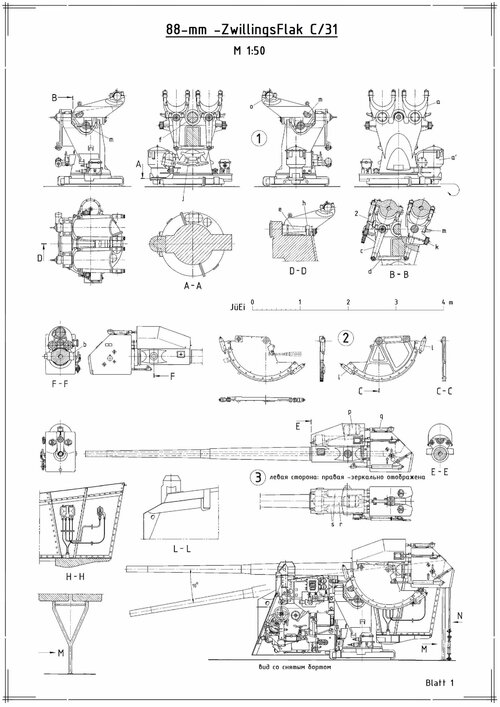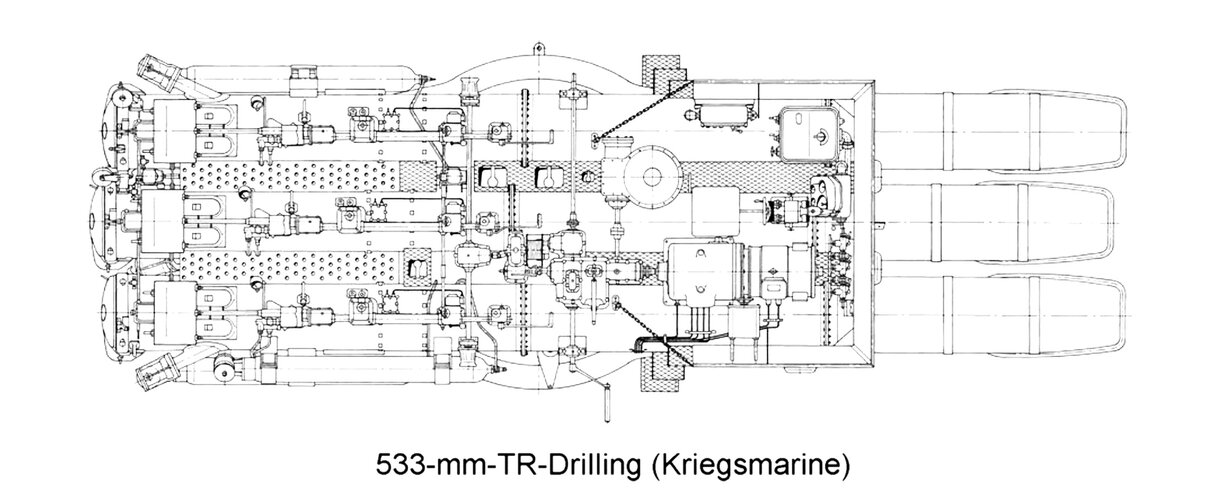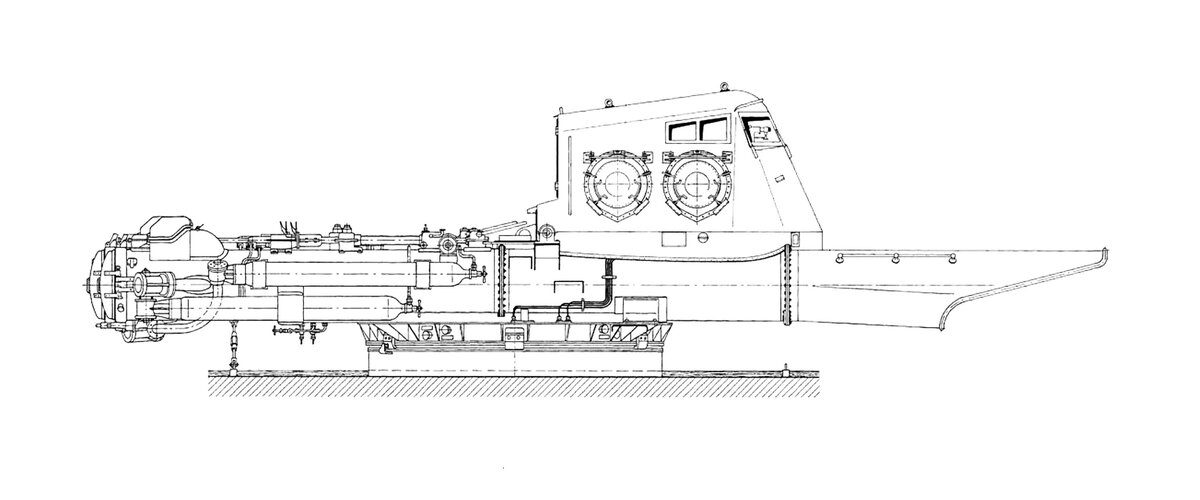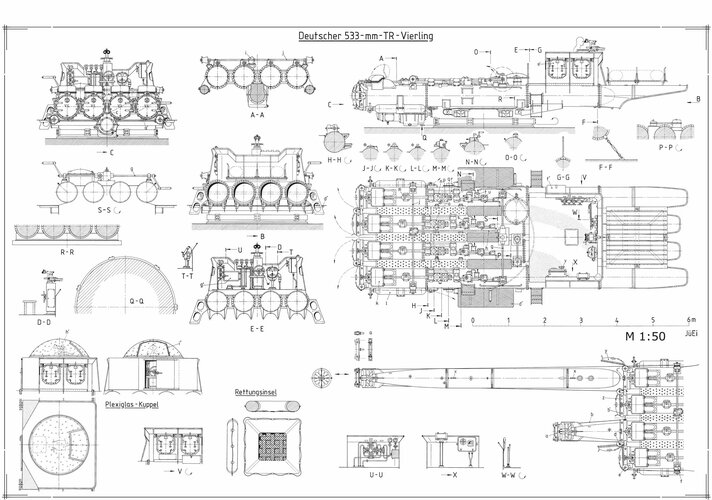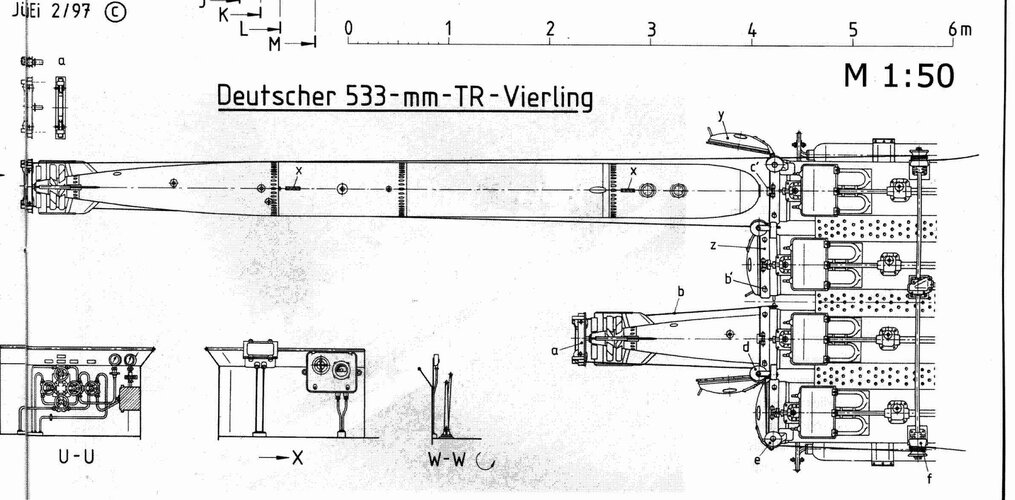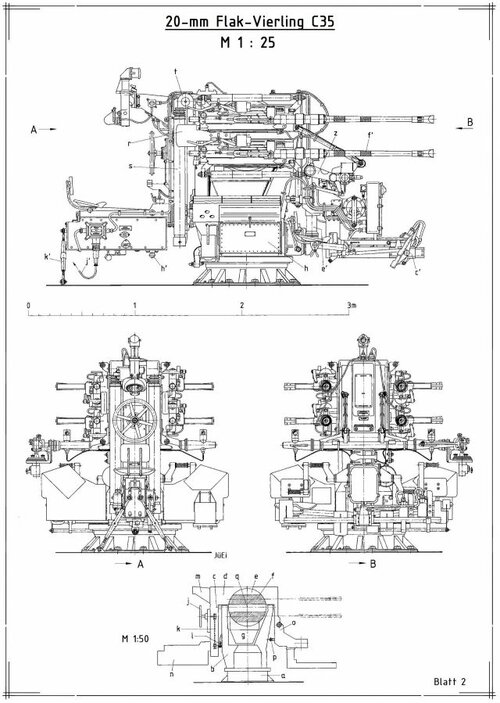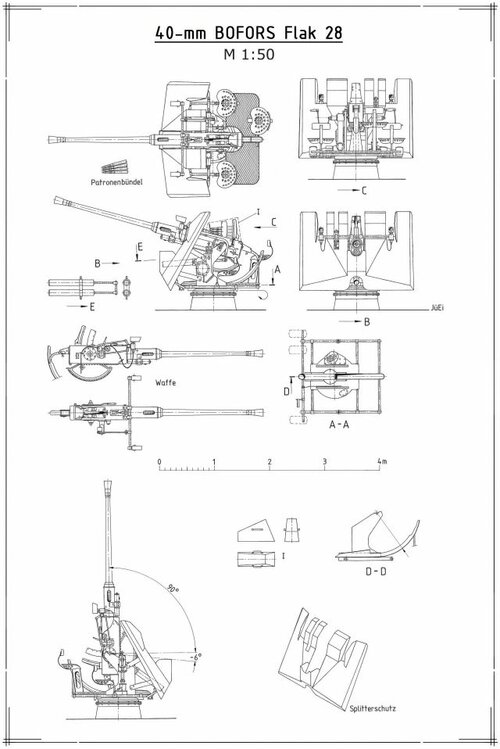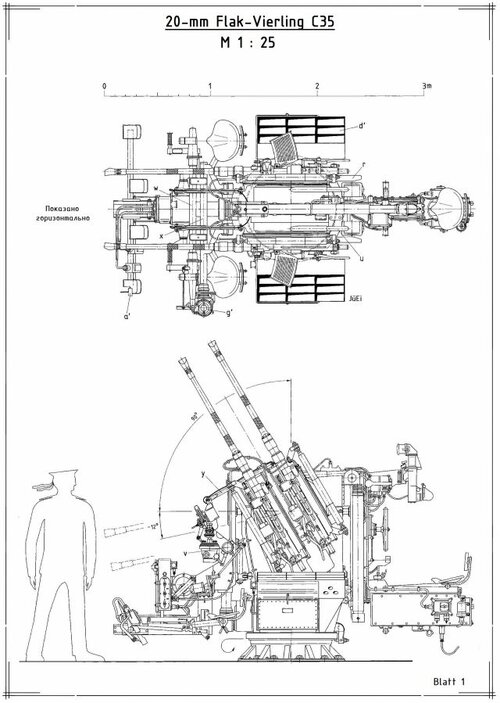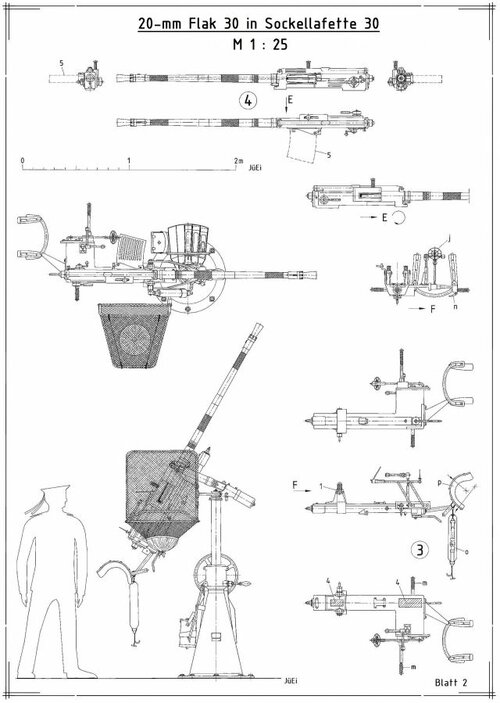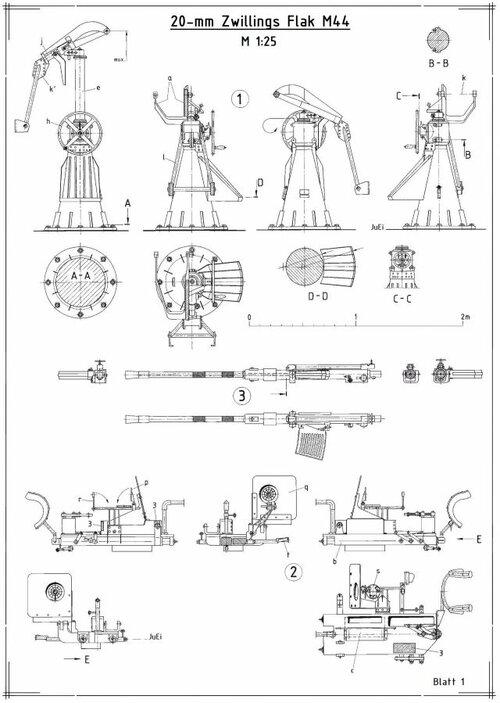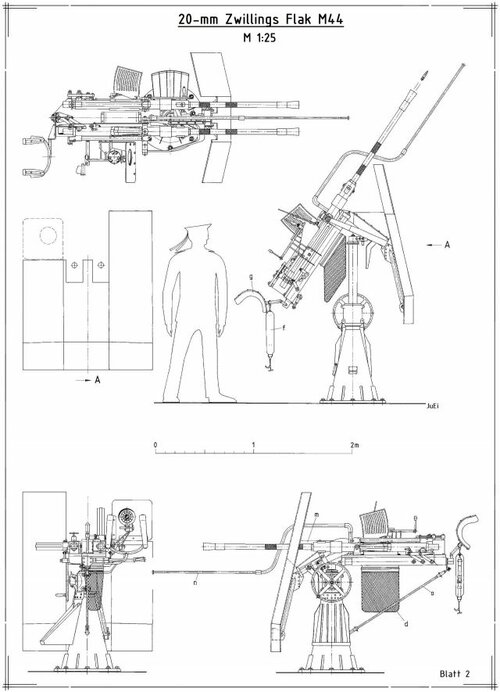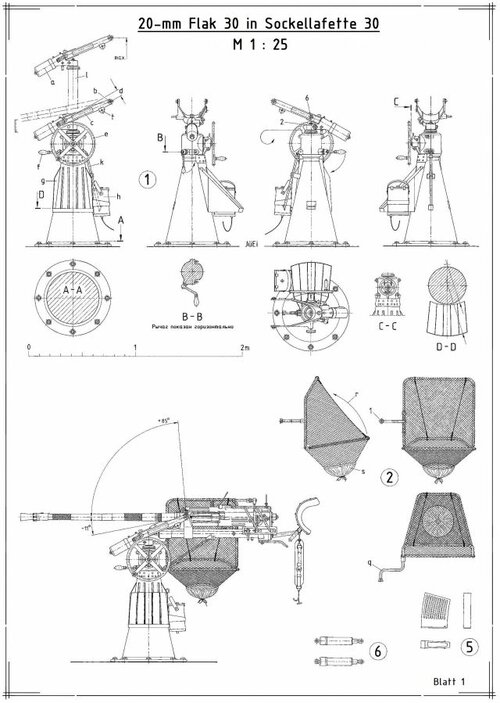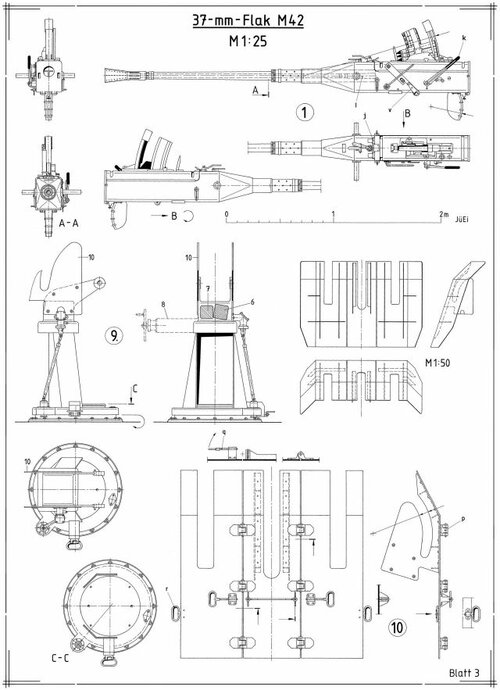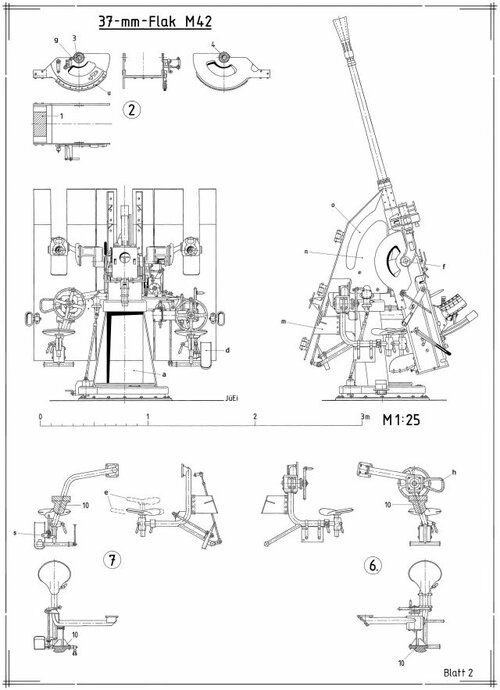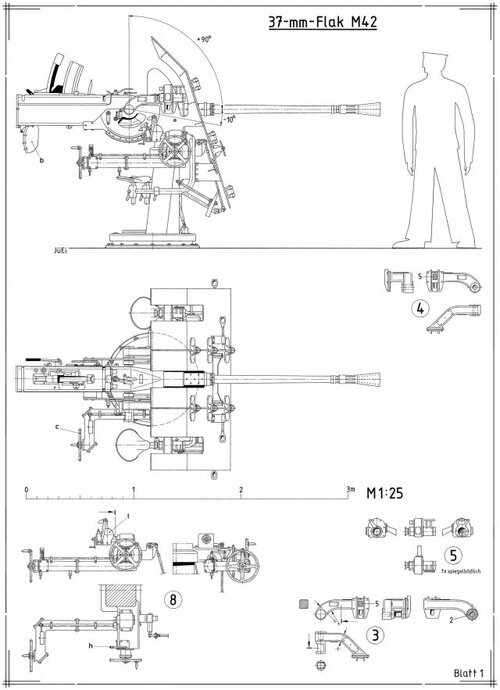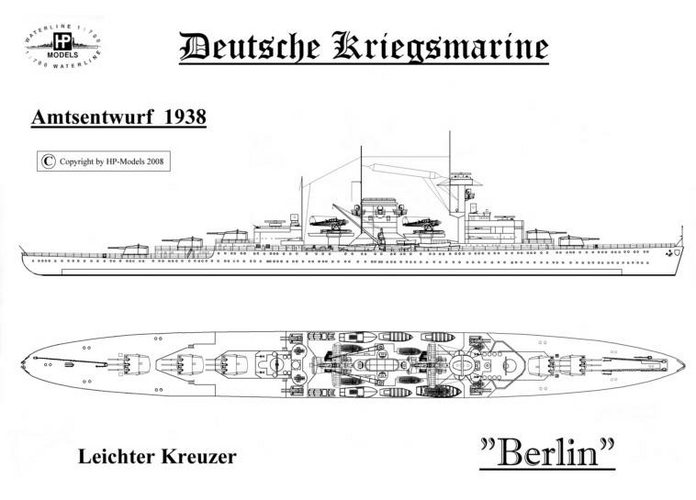And a super-long railway gun: Length 43000, Approx. caliber: 21" → 53.3cm/81
View attachment RH_8_3024_K_0043.jpg
View attachment RH_8_3024_K_0043.jpg
— How big our guns must be?
We're hitting Britain with this one. ️ ️ ️— How big our guns must be?
— Yes.
This was very common on smaller ships in 1944-45- MFP ferries, small escorts, R-boats, Vorpostenboot, Minesweepers and speerbrechers.A question: Does anyone have any photos or drawings of a KM ship fitted with the 8.6 cm rocket launcher?
I haven't seen any photos confirming this on any KM ship, although they were supposedly fitted. The fighter direction ship Togo, for example, was supposedly fitted with 4 launchers in early 1944.
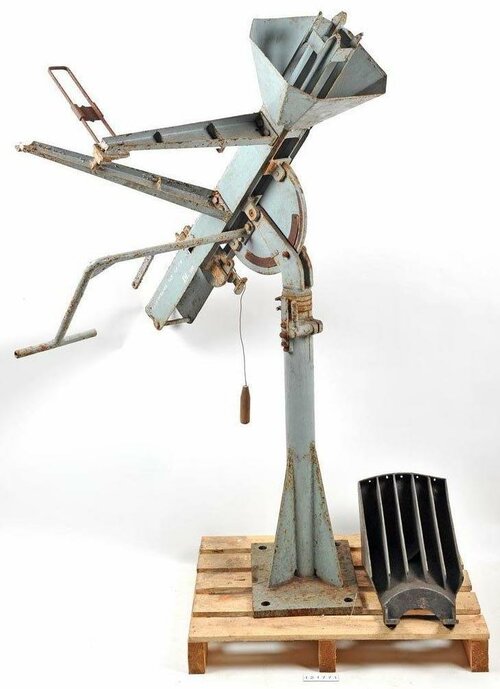
A question: Does anyone have any photos or drawings of a KM ship fitted with the 8.6 cm rocket launcher?
I haven't seen any photos confirming this on any KM ship, although they were supposedly fitted. The fighter direction ship Togo, for example, was supposedly fitted with 4 launchers in early 1944.
Photos/drawings? No, but it is noted in literature that they were fitted in 1944-45 to various ships, even CLs.This was very common on smaller ships in 1944-45- MFP ferries, small escorts, R-boats, Vorpostenboot, Minesweepers and speerbrechers.
Very common in the Mediterranean, Adriatic and Channel.
They are mounted aft in open spaces. Look for the tell-tale square cone in photos.

 drive.google.com
drive.google.com
 drive.google.com
drive.google.com
The suppose schlachtschiff "O" is schlachtschiff "G" hull btw given the plan name.Schlachtschiff O
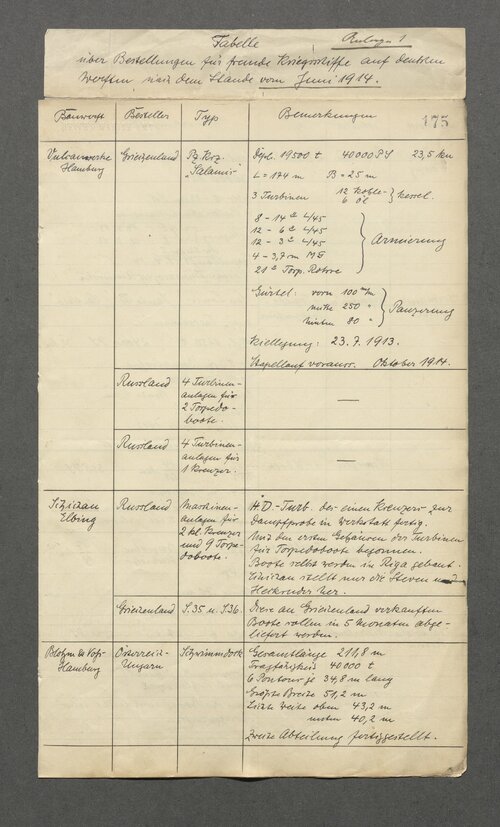

Alexi, what is the exact source for both scans? The four torpedoboats mentioned to be built by the Vulkanwerft, Stettin on account of the Netherlands were never delivered. In Dutch service they would become the Z1-4. Instead all four were commissioned in the German navy as V105-108 and three survived the First World War. V10 became Polish Mazur, V106 handed over to Brazil and sold to England, broken up in 1920?, V107 sunk after hitting a mine on 8 May 1915 and V108 became Polish Kaszub. The Dutch shipyards Nederlandsche Scheepsbouw Mij, Amsterdam laid down in 1915 built as replacement the Z1-4.View attachment 731534View attachment 731535
Country in the lists ranging from Greece (finalized Salamis), Russia (AG Vulcan built two light cruisers, with their engines and machinery), Austro-Hungarian? (looks like a 40000t floating dock), Argentina (4 large torpedo boats), Norway, Dutch (4 small torpedo boats), Japan (no clue, but it mentioned diesel, possibly diesel engines).
From "German export designs from private shipyards", here's probably the characteristics of pre-design battleship Salamis, if anyone can decrypt the rest i will very appreciated, according to other texts German call them "panzerkreuzer" (Armored cruiser equivalent term to British "battlecruise
Alexi what is the correct source for both scan?From "German export designs from private shipyards", here's probably the characteristics of pre-design battleship Salamis, if anyone can decrypt the rest i will very appreciated, according to other texts German call them "panzerkreuzer" (Armored cruiser equivalent term to British "battlecruiser").
The text is dealing with the Salamis called a panzerkreuzer.
Lenght over all 144 metres.
Beam 22 metres,
Depth in hold (?) 12,1 metres
Draught 7,43 metres
displacement 13,100 tons
sped 21.5 knots
Building time 24 months
3x2-14cm L/45 (turrets)
8-6 cm L/45 casemates
8-3cm L/50 on aufbauten, rough translation of aufbau=construction
4-3,7cm
Bethelem Co delivered guns?
Remaing text I did not read no time, is dealing with the armour belt =fore 100-center 230-aft 80mm
casemates 150mm
gun turrets 200 mm
conning tower 225 mm
armour delivered by Bethlehem Co?
RM 3/1097 (the scan numbers attached in the image, pg 341 and 342 for the export tables) and thank you for the decryption.Alexi what is the correct source for both scans
One - RM25/15877 - is an O plan, but it seems the other (RM25/8358) was misidentified. I'll move the G plan to Bismarck's folder. Good catch.Both Bayern half-sisters Sachsen and Württemberg have also been digitalized, you can at least see their machinery layout, armor deck, turrets, upper deck etc, though i haven't able to find their diesel engines on the hull yet to compares with Baden and Bayern.
The suppose schlachtschiff "O" is schlachtschiff "G" hull btw given the plan name.
These calibers are in inches, not centimetres. So, that will be 3×2 356-mm/45, 8× 152-mm/50, and 8× 76-mm/50. The only caliber given in centimetres is the last one, 3,7-cm — these are, most likely, saluting guns.3x2-14cm L/45 (turrets)
8-6 cm L/45 casemates
8-3cm L/50 on aufbauten, rough translation of aufbau=construction
Well done. As memory serves, measurements done on German plans are also in Imperial. Weird, as I had thought they'd converted entirely to metric decades before.@Roodbaard1958!
These calibers are in inches, not centimetres. So, that will be 3×2 356-mm/45, 8× 152-mm/50, and 8× 76-mm/50. The only caliber given in centimetres is the last one, 3,7-cm — these are, most likely, saluting guns.
P.S. How the hell does one quote/reply to a post which is entirely a quote itself?... Maybe my browser is too old, but normal quoting just doesn't work for me.
Well, we also have Weser (ex-Seydlitz), which is sorta light carrier and was renamed after river. So, with light carriers we can be relatively certain about their naming scheme.speaking of the German carriers: does anyone have information on any other proposed names for carriers besides the Graf Zeppelin and the Jade/Elbe? "Peter Strasser" is obviously often claimed, but it is said that this name is in fact merely speculative.
Is it even known that the naming conventions would be "Germans that made large contributions to aviation" for the fleet carriers, and rivers for the light? Or is that speculation as well?
And how accurate are other hypothetical names, like for instance August von Parseval (possibly it should be "Parzeval" according to the era?), Manfred von Richtofen, Max Immelmann, and Erich Loewenhardt by Wargaming?
I could see a name after Mölders happening (considering the honorary fighter wing and the Bundesmarine destroyer) -- perhaps like "Oberst Mölders"?
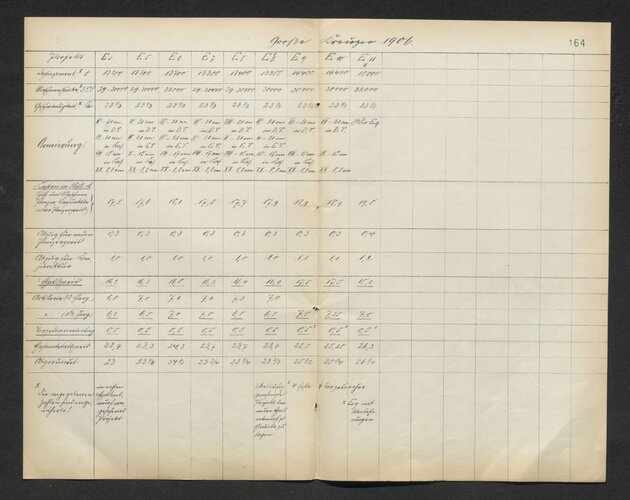
thanksFrom Erich Gröner "Die deutschen Kriegsschiffe 1815-1945" vol.1 :
Was there any information you could find regarding the origins of the - Flugdeckkreuzer (1942) blueprint? From what sources I have access to there is no information about this type of flightdeck cruiser design.Hello all.
It's been a long while, but I combed through the archive for new plans. Today is for KM ship plans specifically. Quite a few were found, some already known and posted, but all are now in the share drive for convenient access.
Included are plans for:
- Admiral Hipper (9 plans)
- Admiral Scheer (8 plans)
- Artillerie-Schulschiff Bremse (5 plans)
- Blucher (3 plans)
- Flugdeckkreuzer (1942) (1 plan)
- Flugzeugtrager B (22 plans)
- Flottentorpedoboot 1940 (2 plans)
- Flottentorpedoboot 1941 (7 plans)
- Graf Zeppelin (129 plans)
- Koln (3 plans)
- Kreuzer M (1 plan)
- Prinz Eugen (65 plans)
- Scharnhorst (10 plans)
- Schlachtschiff H (4 plans)
- Schlachtschiff O (2 plans)
- Kreuzer Seydlitz/Lutzow (4 plans)
- Spahkreuzer 1938 (3 plans)
- Type 1934 (1 plan)
- Type 1934A (21 plans)
- Type 1936 (23 plans)
- Type 1936A (18 plans)
- Type 1938B (2 plans)
- ZF6/ZF7/ZF2 (8 plans)
Not all of these plans are immediately of interest or groundbreaking in any way. A few of the sub-10 plan ones consist of nothing but crane drawings or living accommodation specifics, to give a couple of examples. Perhaps that is your thing, but I suspect most do not find it of particular interest.
The Fzt. Graf Zeppelin/B plans are of much use in the playing of "hangar tetris". There is a "plan" with a series of tables giving specific detail to the armor arrangement of the Admiral Hipper-class within the new Prinz Eugen plans. Kreuzer M's sole new plan is of its Vulcan gearbox used for the four M12Z 42/58 engines on the center shaft. Of interest to me is a 1939 Type 1936A plan that shows a "simplified" version of the Drh. L. C/38 turret that you see on other plans like that of the Type 1938B, Kolonialkanonenboot, and some Type 1937 drawings - and Schlachtschiff O, of course.
I will be making dives into other areas (e.g. RM3) later on.
Cheers.
Germany - Sarcasticat's Home :) - Google Drive
drive.google.com
Alexi, what is the corrrect source for this scan?Data tables of armored cruiser "E" or "Grosse Kreuzer 1906" (aka SMS Blücher), there's some interesting bit about her preliminaries from other pages but i can't read since most these are hand writing, note "D.T" mean double turret and "E.T" mean single turret.
View attachment 732799
Note both E6 and E7 have 17cm gun secondaries.
RM 3-357 page 0331 and 0361, the scans numbers should be in the file image when you hover/click on it.Alexi, what is the corrrect source for this scan?
Thx!RM 3-357 pagina 0331 en 0361, de scannummers zouden in de bestandsafbeelding moeten staan als u erop zweeft/klikt.
nice one, thanks@Squallog Hit <search> in top right SPF bar, hit <Everywhere>, select 'This thread'. Specify item.
<everywhere> drop down menu with 'in thread' option only appears if you're in the thread you would like to search in.
In most cases they were designated as SK C/[xx], where:How does the naming scheme for Kreigsmarine cannons of this era actually work?
thanks for the info, what about the mount naming scheme, is that essentially the same system?In most cases they were designated as SK C/[xx], where:
> SK stands for Schiffkanone (naval gun)
> C stands for Construktionjahr (construction year)
> [xx] is a number denoting a year when the gun was designed. For example, the gun named SK C/30 was designed in 1930.
Some experimental guns were designated as Gerät [number], Gerät meaning "device".
There also were TbtsK C/36 (Torpedobootskanone — torpedo boat gun), Flak M42 (Flugabwehrkanone — anti-air gun, 42 is the year of design), Flak LM43 and some other oddball designations... but I'm not sure if these designations belonged to guns themselves, or to their mounts.
I know this is old but can you please repost the Panzerschiff P Entwurf 1938 and Entwurfsvariante 1939 designs.Here are two variants of the Panzerschiff P project (1938 and 1939) and the "Handelzerstorer" variants following them



